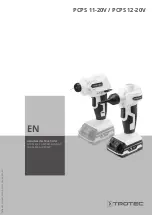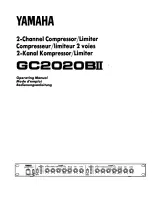
SN55, SN55S, SN55V, SN75, SN75S, SN75V User Manual
4: Installation
02250247-571 R04
Subject to EAR, ECCN EAR99 and related export control restrictions.
56
2. Remove the drain plugs located at the bottom of
the aftercooler and lubricant cooler.
3. Allow the system to drain completely.
4.2.5
Water quality recommendations
Water quality considerations are crucial to the effective
operation of a water-cooled compressor and yet are the
most often ignored. Premature failure of components can
often be traced to a reduction in heat-transfer rate that
has resulted from a reduced flow rate due to scale build-
up in water-cooling lines or the coolers themselves.
To ensure maximum life expectancy and best perfor-
mance of the compressor cooling system, refer to
Table 4-3: Water tests
.
4.2.5.1 Scale
Scale is formed from calcium carbonate, which precipi-
tates out of water. Calcium content tends to be higher in
water taken from wells than water taken from the surface
of lakes. A higher pH value will also assist in the forma-
tion of lime scale. In all cases calcium will form scale
when water that has dissolved calcium is heated. It then
forms lime-scale on surfaces such as the inside of pipes
and the tubing that comprises water coolers. Scale for-
mation on the inside of pipes and inside of heat exchang-
ers acts as a thermal insulator. This causes coolers to be
less effective, and piping to have reduced water flow,
making them less effective. Over time lime scale build-up
can reduce water flow by 80% or greater. This renders
the cooling system ineffective and will damage the sys-
tem. Scale can be controlled with water treatment.
4.2.5.2 Corrosion
As contrasted to lime scale build-up, corrosion eventually
causes a reduction in the wall thickness of pipes. High
levels of dissolved oxygen and low pH levels assist in the
creation of corrosive scale. A thin coating of lime scale is
often beneficial in helping to prevent corrosion from form-
ing.
4.2.5.3 Biological and organic fouling (slime)
The heightened temperatures of compressor cooling
operations help to reduce the likelihood that organic foul-
ing will become a major concern. In the event of an infes-
tation, commercial chemical shock treatments are
available to control any outbreaks.
4.2.6
Seawater-cooled units
Water cleanliness is critical for operation of the compres-
sor. A strainer must be installed in the inlet piping of the
water system. It is also recommended that a solenoid
valve (normally closed) be installed into the water outlet
side of the compressor system. Consult the Sullair Ser-
vice Department for assistance in setting up these rec-
ommended precautionary functions. In addition, be
aware that cleaning of coolers as a result of fouling is a
customer responsibility.
Isolation valves with side drains should be installed on
both the inlet and outlet lines.
The recommended flow rate cannot be exceeded. An ori-
fice plate must be installed in the pipe-work at least 3.3 ft
(1 m) before the cooler. The orifice size must be calcu-
lated to ensure that the maximum seawater flow rate can-
not be exceeded. Without these precautions, the
seawater flow rate through the cooler may be several
Table 4-3: Water tests
Substances
Test interval
Acceptable concentration
Corrosivity hardness, pH, total dissolved solids,
temperature at inlet, alkalinity
Monthly. If stable for 3 to 4 months,
analyze quarterly.
Langerlier index 0 to 1
Iron
Monthly
< 2 ppm
Sulphate
Monthly
< 50 ppm
Chloride
Monthly
< 50 ppm
Nitrate
Monthly
< 2 ppm
Silica
Monthly
< 100 ppm
Desolated oxygen
Daily. If stable, analyze weekly.
0 ppm (as low as possible)
Oil & grease
Monthly
< 5 ppm
Ammonia
Monthly
< 1 ppm
NOTE
If seawater is to be used for cooling, optional
copper-nickel coolers must be selected.
















































